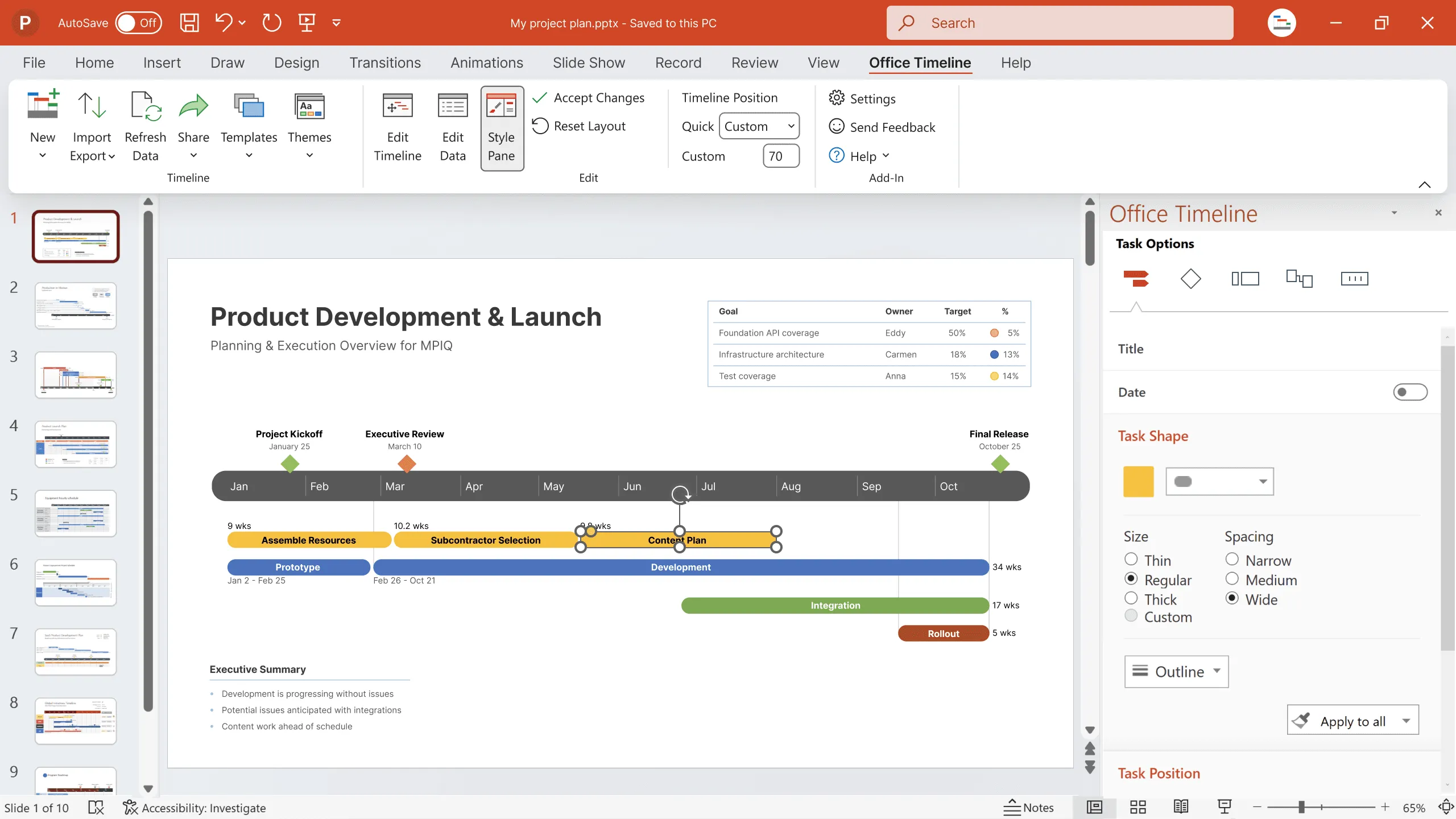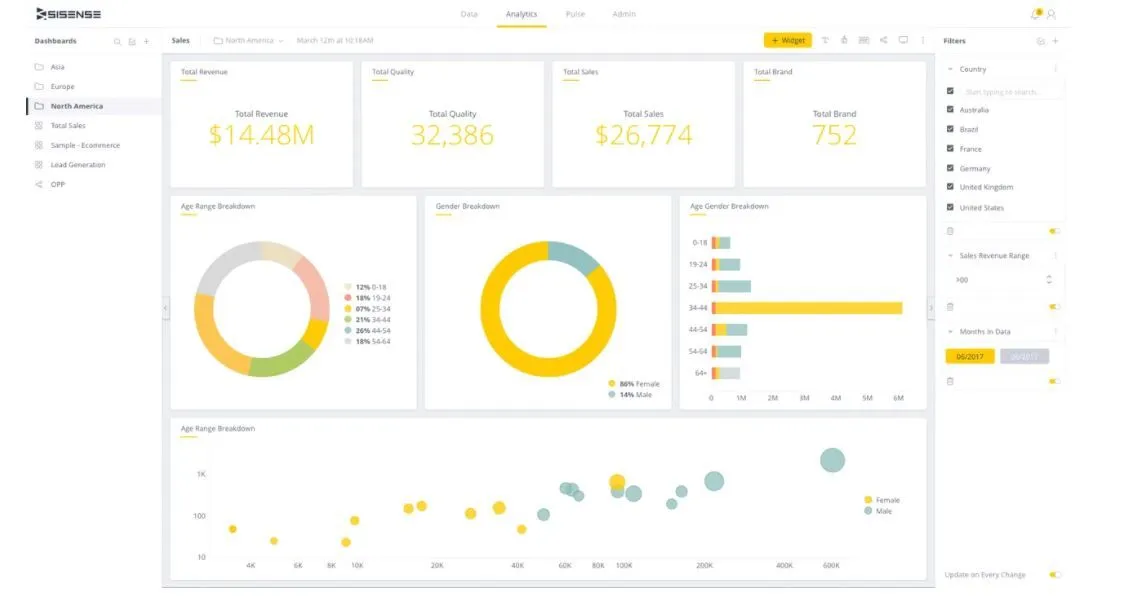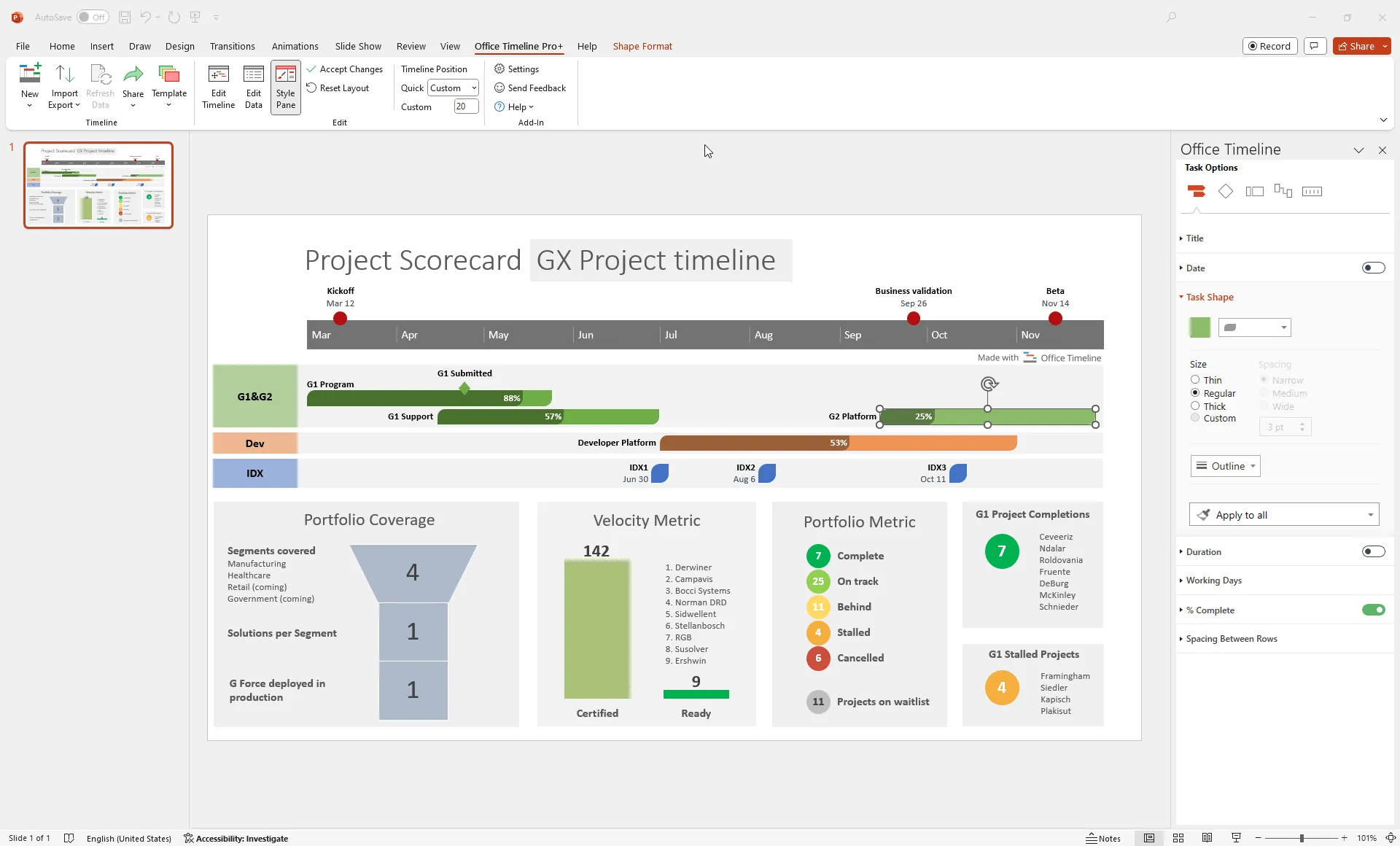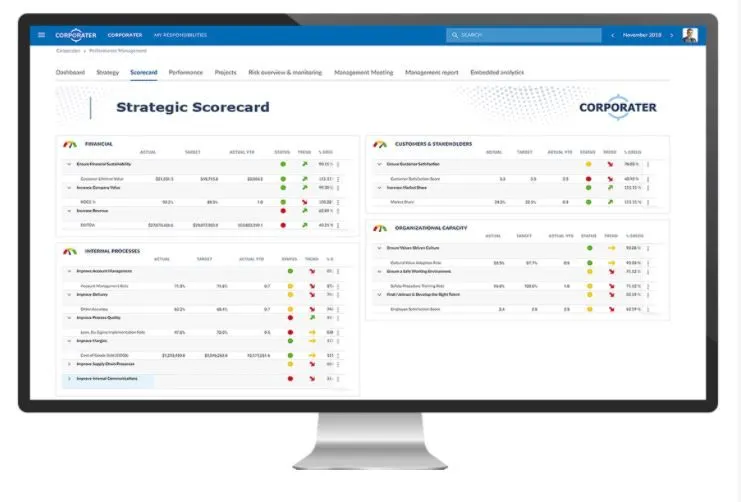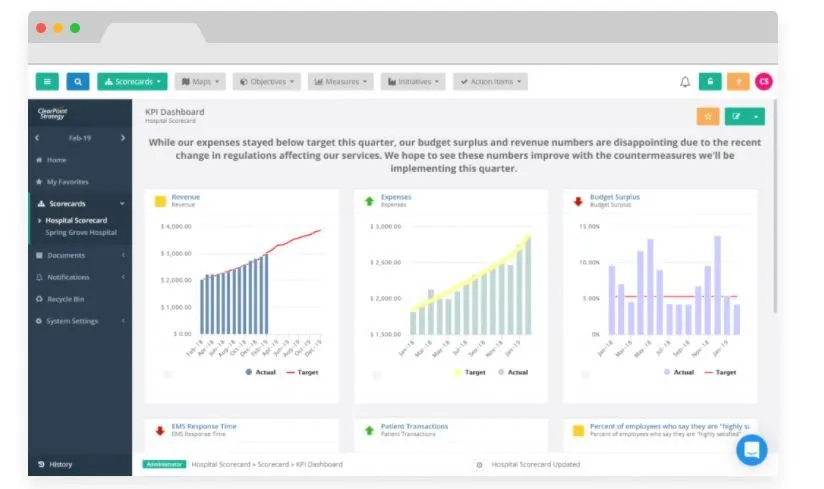Top 5 balanced scorecard software
Maximize your company's performance with the Top 5 Balanced Scorecard software tools! Find the perfect fit for tracking financial and non-financial metrics, and achieve your short- and long-term goals with ease.
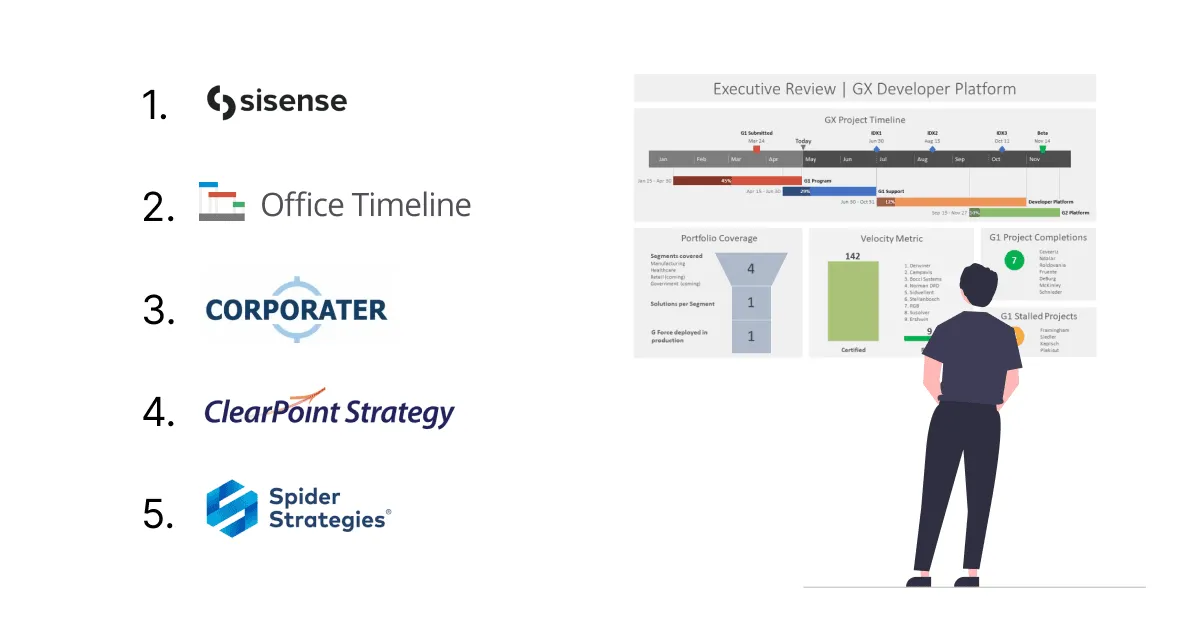
Last updated on May 30, 2024
To have a balanced view of their performance and assess their effectiveness, companies need to look at both financial and non-financial measures, along with their short- and long-term goals. One of the best ways to do this is by using a balanced scorecard (BSC), which needs to be regularly tracked with the help of an appropriate tool.
Since there is a variety of related options out there, choosing the right fit for your organization can be a real challenge. To help you make an informed decision, we have put together a list of selection criteria and the best 5 examples on the market.
Why are balanced scorecards important?
A balanced scorecard is unbeatable when it comes to defining optimal business performance and assessing a company management’s success in achieving desired results. It serves as a powerful tool for translating an organization’s mission and values into actionable steps, guiding it towards success.
To successfully build and implement a balanced scorecard, managers need to:
- Clearly articulate the business’s vision and strategy.
- Identify performance categories that align strategic plans with internal functions and external outcomes.
- Outline objectives that uphold the company’s vision and strategy.
- Develop relevant standards to achieve short-term and long-term milestones.
- Secure enterprise-wide buy-in for the measures.
- Collect and analyze performance data, comparing actual results with desired thresholds.
- Establish suitable budgeting, tracking, and communication systems.
- Implement corrective actions to address any unfavorable gaps.
Once a balanced scorecard is created, it is generally used to:
- Update, clarify, and enhance a company’s strategy;
- Correlate strategic objectives with long-term targets and annual budgets;
- Track the essential elements of the business strategy;
- Incorporate strategic measures into the process of allocating resources;
- Usher and facilitate organizational change;
- Compare performance of geographically diverse business units;
- Increase the understanding of the corporate vision and strategy at a company-wide level.
Given the many important purposes that a balanced scorecard can serve, it is critical for companies to regularly monitor and update it. By doing so, they can benefit from a constant feedback mechanism that lays down a clear direction towards achieving their goals. To get the best results, using a dedicated application to manage your balanced scorecard is recommended.
How to choose the best balanced scorecard software for your organization
To decide which balanced scorecard option is the most appropriate for your business, the following attributes may serve as useful selection criteria:
- Ease of use – opt for software that is intuitive and comes with clear guidelines. Training materials, how-to support materials, and scorecard templates can be beneficial.
- Customization – choose a system that allows you to tailor it to your specific goals and strategies. Look for balanced scorecard software options with free trials for testing before committing.
- Strategy map features – quality balanced scorecard tools should enable the creation of strategy maps from various perspectives, with user-friendly tools for customization (adding logos, drawing arrows between objectives, moving and resizing objects on the graphic).
- Visualization of organization structure – your BSC-specific program should offer powerful visualizations to illustrate the relationship between key performance indicators and objectives.
- Dashboards – seek software with customizable dashboards for easy monitoring and analysis of critical data.
- Annotation, attachments, and collaboration – features that facilitate discussions and sharing of information enhance collaboration and decision-making.
- Reporting features – a good BSC tool should be able to generate figures, charts, and relevant analysis so you can get both qualitative and quantitative reports for your company.
- Export capabilities – the system of your choice should allow you to export data into a clear and organized manner (either in Excel, PowerPoint or .pdf format).
- Automation and integration – many organizations want to adopt a BSC platform mainly to save time and efforts. Thus, look for software with features that can speed up processes (such as easy data entry and upload) and which integrates with other programs in place within your company.
- Access rights – ensure that your system allows for user access restrictions based on roles and responsibilities to maintain data security and focus on relevant tasks.
Your ultimate balanced scorecard software list
Let’s now take a closer look at each of these balanced scorecard tools.
1. Sisense
Powered by In-Chip and Stack technologies, Sisense enables even the most non-technical users to access data and build interactive dashboards and business intelligence reports. Providing a single, out-of-the-box interface to process and visualize large sets of variables without IT resources, it simplifies business analysis for complex data. You can use its drag-and-drop feature, one-click formulas and diverse range of dashboard widgets (geographical maps, line charts, scatter plots, gauges and pie charts) to measure KPIs, determine trends, highlight correlations, compare and pinpoint the best representation of your input.
Feature Overview:
- Joining data from multiple sources;
- Drag & drop joining of multiple data sources;
- Creation and sharing of interactive dashboards;
- Capability to query data in real time;
- Offers a wide range of deployment options;
- Access right control;
- Demo available;
- Custom pricing based on your business’s profile.
2. Office Timeline
Available as both a desktop add-in (Office Timeline) and online application (Office Timeline Online), it is a user-friendly tool that helps you to create a variety of strategy management visuals as presentation-ready, native PowerPoint slides. Featuring a diverse gallery of pre-designed templates, an intuitive drag&drop interface and smart layout engine that automatically generates representations of your data, the software is ideal for non-technical users.
Feature Overview:
- Easy data import functionality and pre-built templates to set you up faster;
- Rich data management and customization functionalities (task/milestone creation and assigning capabilities, shapes, colors, percentage complete and status indicators for progress tracking, display of dependencies and critical path);
- Integration with Jira, Excel, MS Project, Smartsheet and Wrike;
- Flexible export capabilities (as Excel files, PowerPoint slides and PNG images);
- Share & Collaboration functionality and data access rights option to allow multi-party editing on the same visual when everyone is on the same plan;
- Freemium models available for both versions (with users limited to 10 rows of data);
- Price: the Office Timeline Online premium plan costs $149/year; the Office Timeline PowerPoint add-in most advanced edition costs $249/year with a free 14-day trial available as well.
3. Corporater
Providing a business management platform that includes all the core elements related to a BSC and which adapts to the user’s unique business model, Corporater empowers medium and large companies to assess, manage, and continuously improve their performance. With functions and capabilities that allow you to link multiple management disciplines (compliance, strategy, risk, operations, finance, HR and others), Corporater’s interface lets you create custom management solutions for strategy, KPIs, performance, and business dashboards.
Feature Overview:
- Balanced scorecard and XPP model;
- Easy-to-use strategy map designer;
- Perspectives and strategic objectives components;
- Cascading of strategy and alignment;
- Data source integrations;
- Annotations;
- Goal management functions;
- Progress tracking features;
- Pricing quote on request.
4. ClearPoint Strategy
ClearPoint is a strategy execution tool that lets professionals easily manage objectives, measures, initiatives, and action items in one place. Its users are able to create and customize a single scorecard or multiple cascading scorecards, as well as to automatically generate and distribute a variety of reports. With features to link and align goals and KPIs and to integrate data from different sources, ClearPoint makes it simple for you to execute on your strategic plan.
Feature Overview:
- Scorecard and dashboard creation, updating and customization options;
- Data integration from multiple sources;
- Automation engine;
- Reporting capabilities;
- Notification system;
- Objective, initiative, measure, and action item management functions;
- On-page editing;
- Integrated help and tooltips;
- Demo available on request.
5. Spider Strategies
Spider Strategies is a flexible cloud-based strategy and KPI management tool that allows companies, organizations, and government agencies to user their own strategic model, whether that is the BSC, the Ansoff Matrix, the Strategic Horizons or an in-house strategic process. Officially recommended by the Balanced Scorecard Institute, it automates your BSC once you enter your perspectives, objectives and measures.
Feature Overview:
- Automatically generated scorecards and strategy maps based on data entry;
- Color-coded customization and update options for objectives, initiatives, KPIs;
- Live dashboard sharing with non-registered parties;
- Linked actions and cascading scorecards;
- Goal-tracking function;
- Drill-down capabilities;
- Search widget and alerts system;
- Product tour available and live demo offered upon appointment;
- Price: $125/month per user (payable annually).
Conclusion
Effectively creating and managing your balanced scorecard heavily depends on the software that you use for this particular purpose. We hope that the options outlined in this blog post will guide you towards choosing the most suitable solution for you.
Balanced Scorecard Software Overview
| Software | Key benefit | Price | Free trial |
| 1. Sisense | Simplifies business analysis for complex data | Custom pricing on request | Test drive available |
| 2. Office Timeline | Creates strategy management visuals as native PowerPoint slides | From $149/year | Both 14-day free trial and freemium versions available with no obligations |
| 3. Corporater | Links multiple management disciplines | Pricing quote on request | On request |
| 4. ClearPoint Strategy | Integrates data from different sources | Pricing quote on request | Free 15-day trial conditioned by a demo |
| 5. Spider Strategies | Automatically generates scorecards and strategy maps | $1,500/year per user | Test drive available |
FAQs about balanced scorecard software
Considering the importance of selecting the right balanced scorecard software for your organization, we’ve compiled a list of frequently asked questions (FAQs) along with their answers to provide clarity and guidance in your decision-making process.
Key factors to consider when choosing a balanced scorecard tool for your organization include:
• ease of use;
• customization options;
• strategy map features;
• visualization of organizational structure;
• dashboards;
• annotation and collaboration tools;
• reporting capabilities
• export options;
• automation and integration features;
• access rights management.
The customization of a balanced scorecard ensures that the software aligns with your organization’s unique goals, strategies, and performance metrics, optimizing its effectiveness in driving success.
Balanced scorecard software facilitates strategy execution by providing tools for:
• setting objectives;
• aligning KPIs with strategic goals;
• monitoring performance;
• identifying trends;
• and taking corrective actions to achieve desired outcomes.
Visualization tools enhance understanding and communication of complex data, enabling stakeholders to grasp relationships between performance metrics, objectives, and organizational strategy more intuitively.
For more resources on how to manage projects visually, check out our dedicated page on visual project management.
Successful implementation of a chosen balanced scorecard system requires:
• clear communication of objectives;
• comprehensive training for users;
• ongoing support;
• alignment with organizational goals;
• leadership commitment to utilizing the software effectively.
Try out Office Timeline – a flexible and highly visual project planning tool that can easily accommodate your strategic performance management needs. Create actionable plans that align with your objectives and drive performance across your team using our balanced scorecard templates that can be easily customized and updated using Office Timeline’s free 14-day trial.
Project management tips and tricks
Tagged With:
ScorecardTurn project data into professional timelines
Get the advanced features of Office Timeline free for 14 days.
